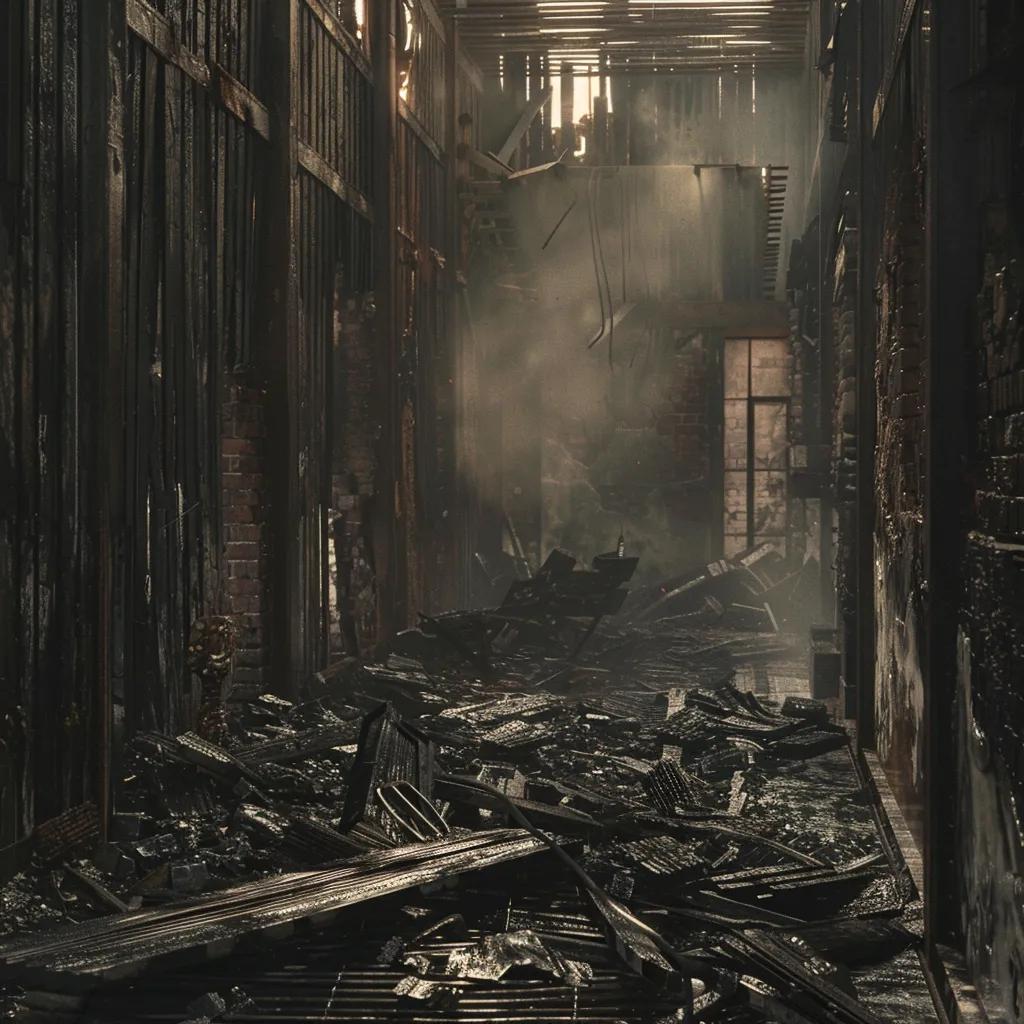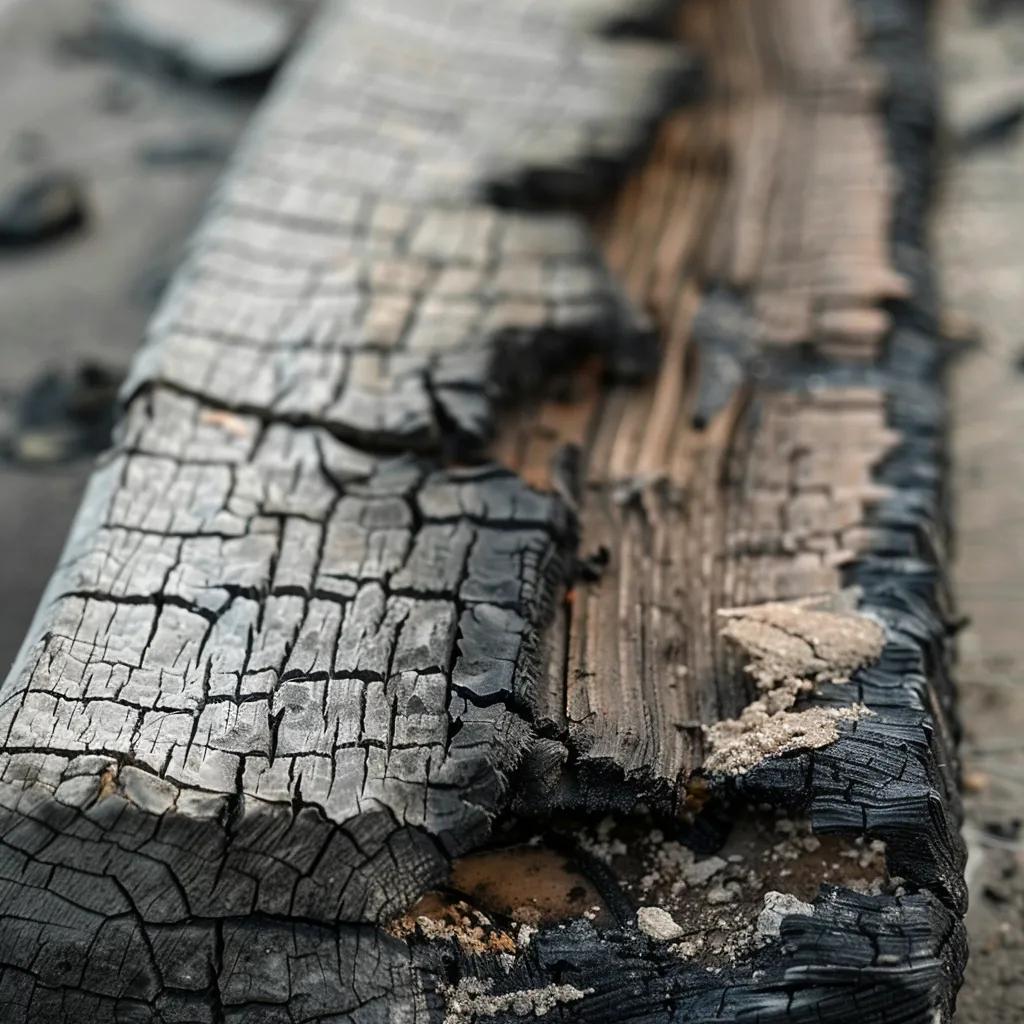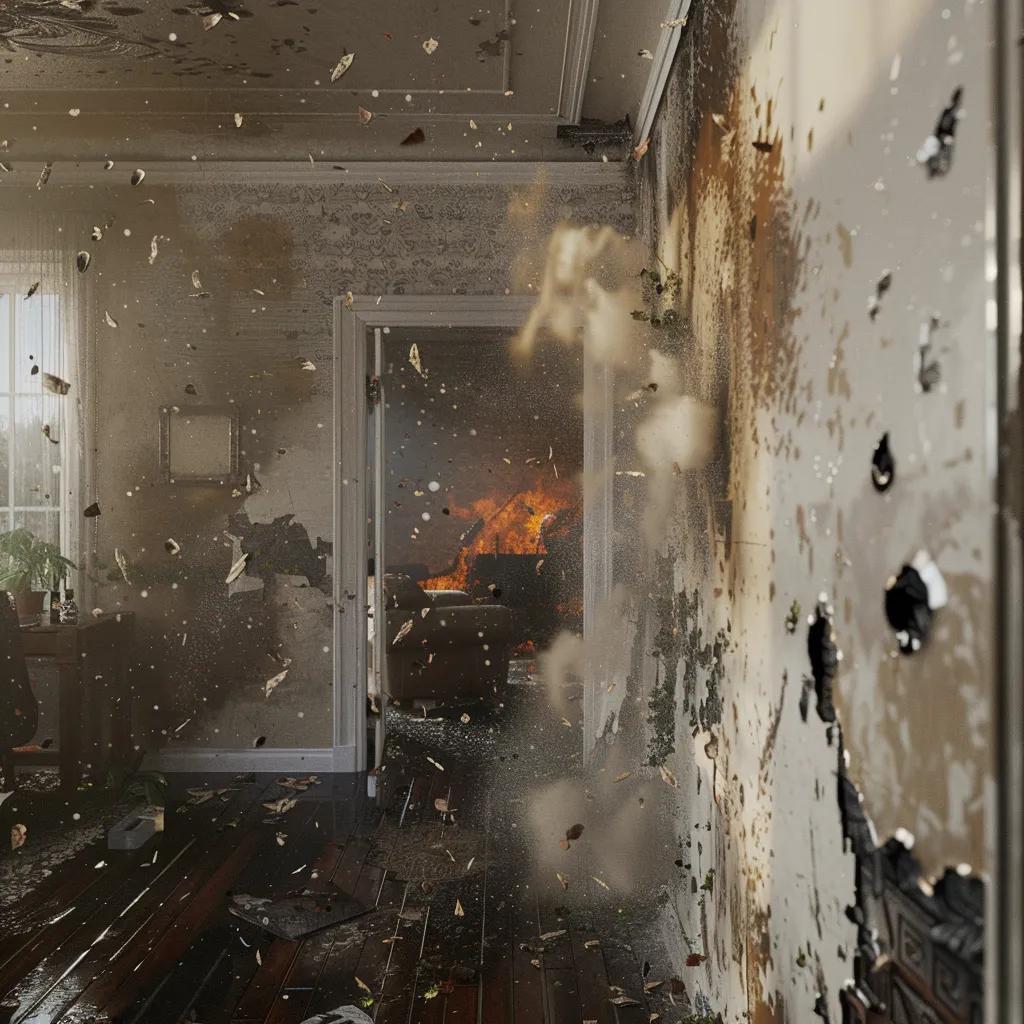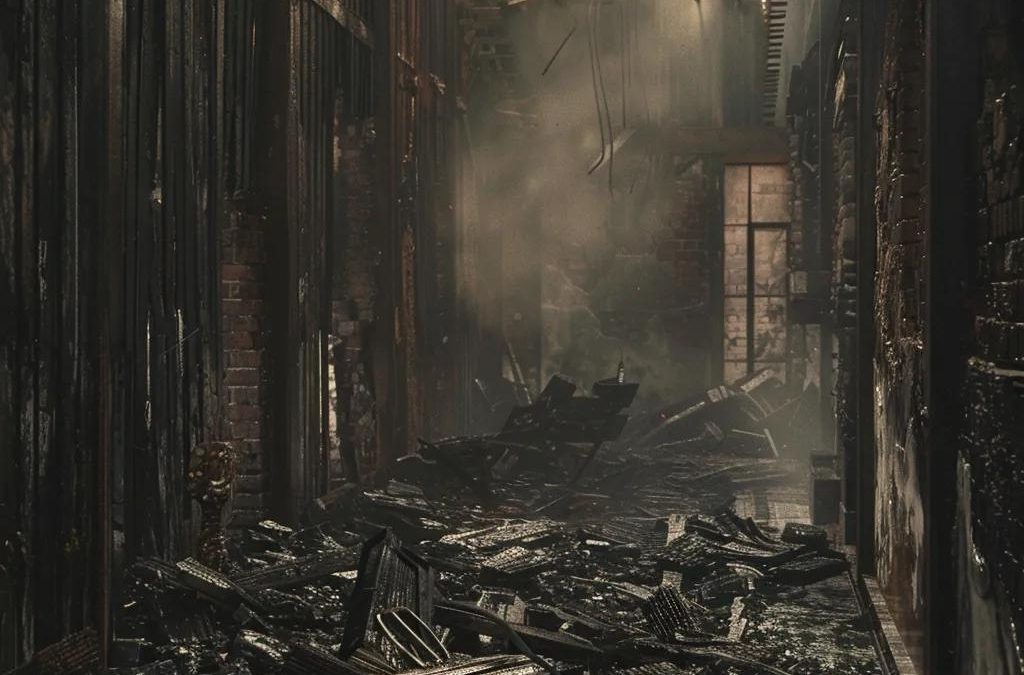
Smoke Damage vs. Fire Damage: Key Differences for Effective Smoke Damage Restoration Services

Understanding whether your property has suffered smoke damage or fire damage is the first step toward a successful restoration. A single spark can ignite flames that char structural components, while lingering smoke can coat surfaces in corrosive soot and odor. This guide clarifies the definitions, causes, impacts, and restoration strategies for both smoke and fire damage. You’ll learn how heat and flames affect building materials, why soot and residues pose hidden threats, and when to call Restoration Experts for 24/7 emergency response, comprehensive damage assessment, and insurance claim support. We’ll cover:
- The nature and characteristics of fire damage
- How smoke damage differs in visibility, health risks, and cleanup focus
- A side-by-side comparison of both damage types
- Detailed types of smoke residues and their unique remediation needs
- The cost factors, local regulations in New York, and post-restoration best practices
By mastering these distinctions, you can protect property value, streamline insurance claims, and ensure a healthier environment after combustion incidents.
What Is Fire Damage and How Does It Affect Properties?
Fire damage occurs when flames and intense heat directly impact building components, causing burning, charring, and compromise of structural integrity. This phenomenon can manifest as warped steel beams, cracked concrete, and charred wood framing, requiring immediate attention to prevent collapse and further destruction.
What Causes Fire Damage and What Are Its Main Characteristics?
Fire damage is triggered by uncontrolled combustion—often from electrical faults, cooking accidents, or heating equipment malfunctions. Flames break chemical bonds in materials, resulting in:
- Charring on wood and drywall
- Heat discoloration on metals
- Ash and embers scattering across floors
These through-heat effects weaken load-bearing elements and can spread rapidly, demanding prompt structural evaluation and containment. Recognizing these signatures helps prioritize reconstruction over cosmetic repair.
How Does Fire Damage Impact Structural Integrity?

When fire reaches critical temperatures (above 400 °F), steel can lose half its strength and wood can splinter or collapse. Thermal expansion and contraction create cracks in concrete and cast iron, while trusses and joists may buckle under heat stress. A professional structural assessment pinpoints compromised beams and load paths, ensuring safe planning for reinforcement or replacement and reducing risk of secondary collapse.
Fire Damage and Structural Integrity
When exposed to high temperatures, steel can lose a significant portion of its strength, and wood can char and weaken, potentially leading to structural failure. Concrete can also be affected, with thermal expansion and contraction causing cracks and spalling.
National Fire Protection Association, Fire Protection Handbook (2017)
This source supports the article’s claims about the impact of fire on building materials and the resulting structural risks.
Which Building Materials Are Most Affected by Fire Damage?
Different materials react uniquely to flame exposure:
- Wood Framing → Deep charring, loss of tensile strength
- Steel Components → Reduced yield strength, warping
- Concrete → Spalling, surface scaling
- Insulation → Complete combustion or melting
Understanding these material-specific vulnerabilities guides targeted repairs and reconstruction priorities, moving restoration from emergency stabilization to full rebuild.
What Is Smoke Damage and How Does It Differ from Fire Damage?
Smoke damage arises from the byproducts of combustion—soot, ash, and volatile chemicals—that disperse beyond the flame zone. Unlike fire damage, smoke damage often escapes immediate detection, embedding in upholstery, HVAC systems, and porous surfaces. Early identification and cleaning restore air quality, prevent corrosion, and protect property value.
What Are the Causes and Visible Signs of Smoke Damage?
Smoke damage originates from incomplete combustion of organic and synthetic materials. Visible indications include:
- Yellow-brown staining on ceilings and walls
- Black soot streaks around vents and light fixtures
- Persistent musty odor
Particles can adhere to surfaces or travel through ductwork, leaving a thin film that accelerates corrosion in metal fixtures and degrades wood finishes.
How Does Smoke Damage Affect Property Value and Health?
Lingering soot and odor reduce market appeal and may lower appraisals by up to 15 %. Inhalation of fine soot particles can cause respiratory irritation, headaches, and long-term lung issues.
Health Risks of Smoke Exposure
Inhaling fine soot particles from smoke can cause respiratory irritation and long-term health issues. Prolonged exposure can exacerbate conditions like asthma and bronchitis, and increase the risk of cardiovascular complications, especially for vulnerable populations.
U.S. Environmental Protection Agency, Smoke and Your Health (2024)
This citation provides scientific backing for the health hazards associated with smoke inhalation, as discussed in the article.
Addressing smoke damage through professional deodorization and deep cleaning preserves asset value and minimizes health liabilities for occupants and visitors.
What Types of Smoke Damage Exist and What Challenges Do They Present?

Four primary smoke residue types demand distinct restoration methods:
- Dry Smoke – Powdery, from high-heat fires; voids and cracks trap particles
- Wet Smoke – Sticky, from smoldering fires; requires solvent-based cleaning
- Protein Smoke – Thin film with pungent odor from organic fires; bonds tightly to surfaces
- Fuel Smoke – Dense, oily residue from petroleum-based fires; resists standard detergents
What Are the Key Differences Between Smoke Damage and Fire Damage?
Below is a structured comparison of how fire damage and smoke damage diverge across core attributes:
| Entity | Attribute | Fire Damage | Smoke Damage |
|---|---|---|---|
| Cause | Origin | Flames and extreme heat | Soot, ash, and combustion byproducts |
| Nature of Damage | Physical Form | Burned, scorched materials | Residue, staining, corrosive films |
| Visibility | Detection | Immediately apparent | Often hidden, discovered later |
| Primary Risk | Safety Impact | Structural collapse, open-flame hazards | Respiratory issues, chemical exposure |
| Restoration Focus | Remediation | Reconstruction, structural repair | Deep cleaning, deodorization, air quality control |
How Do Causes and Nature of Damage Differ Between Smoke and Fire?
Fire damage stems directly from thermal energy breaking down materials, whereas smoke damage emerges from microscopic particles and gases adhering to surfaces. This distinction affects both cleanup methods and health precautions, guiding specialists to choose either reconstruction or decontamination strategies.
How Does Visibility and Safety Risk Vary Between Smoke and Fire Damage?
Flames leave visible charring and structural cracks, enabling quick hazard assessment. In contrast, smoke damage can lurk in HVAC ducts and wall cavities, presenting inhalation risks that necessitate air quality testing and occupancy restrictions until deodorization is complete.
What Are the Different Restoration Focus Areas for Smoke vs. Fire Damage?
Restoration after fire centers on structural stability, requiring engineering assessments and material replacement. Smoke mitigation emphasizes filtration, chemical cleaning agents, and odor neutralization technologies such as ozone treatment and thermal fogging.
How Does Odor Removal Differ from Structural Repair in Restoration?
Odor removal uses sealed chambers, activated carbon filters, and hydroxyl generators to break down volatile compounds, while structural repair employs carpentry, steel reinforcement, and concrete patching. Combining both approaches ensures a fully restored, safe environment.
What Are the Types of Smoke Damage and Their Unique Restoration Needs?
Different smoke residues bond to surfaces in specific ways, so identifying the type is critical for choosing the right remediation.
| Entity | Attribute | Value / Treatment |
|---|---|---|
| Dry Smoke | Residue | Powdery deposits; vacuum and soda blasting |
| Wet Smoke | Texture | Sticky tar; solvent-based degreasing |
| Protein Smoke | Odor Profile | Pungent, acidic smell; enzyme cleaners |
| Fuel Smoke | Chemical Composition | Hydrocarbons; heavy-duty alkaline wash |
What Is Dry Smoke and How Is It Treated?
Dry smoke from high-heat fires leaves a fine powder that embeds in crevices. Technicians use soda-blasting or dry-chemical sponges to lift particles before surface washing, preventing abrasion of underlying materials.
What Is Wet Smoke and What Cleaning Challenges Does It Present?
Wet smoke results from low-temperature, smoldering combustion and creates sticky tar that clings to walls and fabrics. Restoration Experts apply solvent-based cleaners and high-pressure washing to dissolve residues without damaging finishes.
How Does Protein Smoke Affect Odor and Restoration?
Protein smoke leaves a hard-to-detect film and a foul odor that can intensify with humidity. Enzymatic detergents break down organic compounds, followed by ozone or hydroxyl treatments to neutralize lingering smells.
What Makes Fuel Smoke Difficult to Clean?
Fuel-based fires produce heavy hydrocarbons that resist conventional soaps. Technicians rely on industrial-grade alkaline agents and multiple wash cycles, ensuring complete removal of oily coatings that can stain and corrode metals.
Why Is Professional Smoke and Fire Damage Restoration Essential?
Engaging certified restoration experts ensures hidden hazards are uncovered and corrected, protecting occupants and preserving property value.
How Do Professionals Assess Hidden Smoke and Fire Damage?
Restoration technicians use moisture meters, borescopes, and infrared thermal imaging to detect damage behind walls and under floors. This comprehensive assessment identifies structural weak points and contaminated zones for targeted remediation.
What Specialized Techniques Are Used for Smoke and Fire Damage Cleanup?
Advanced methods include:
- Ozone treatment for molecular odor neutralization
- Thermal fogging to penetrate porous materials
- Air scrubbing with HEPA filters
How Does Professional Restoration Mitigate Health Risks?
By removing soot, VOCs, and microbial growth through industrial vacuums and antimicrobial treatments, professionals reduce respiratory irritants and potential long-term health hazards. Proper personal protective equipment also safeguards both workers and occupants during cleanup.
How Do Experts Facilitate Insurance Claims for Fire and Smoke Damage?
Restoration Experts document all findings with detailed reports, photos, and cost estimates. Their familiarity with policy language accelerates claim approval and maximizes coverage, easing financial burdens on homeowners and property managers.
How Does Smoke Damage Restoration Cost Compare to Fire Damage Restoration?
Smoke damage cleanup and deodorization typically range from $200 to $1,200 per room, whereas fire damage reconstruction can run $3,000 to $50,000+ depending on structural repairs.
Smoke Damage Restoration Costs
The cost of smoke damage restoration can vary widely, with factors such as the extent of contamination, the type of smoke, and the accessibility of affected areas influencing the final price. Smoke damage cleanup and deodorization typically range from $200 to $1,200 per room.
Restoration Industry Association, Standard for Fire and Smoke Damage Restoration (2023)
This citation provides industry-standard information on the factors that influence the cost of smoke damage restoration, as discussed in the article.
What Factors Influence the Cost of Smoke Damage Restoration Services?
Key cost drivers include:
- Extent of contamination (surface area affected)
- Smoke type (wet, dry, protein, fuel)
- Odor intensity
- Accessibility (crawl spaces, HVAC systems)
These variables determine labor hours, materials, and specialized equipment required for complete remediation.
How Do Restoration Costs Vary by Damage Severity and Smoke Type?
Minor dry-smoke incidents may need only surface cleaning, while extensive wet or fuel smoke contamination can require multiple solvent treatments and enclosure of affected areas, significantly increasing labor and material costs.
Does Homeowners Insurance Cover Smoke and Fire Damage Restoration?
Most standard policies include coverage for fire and smoke damage; however, coverage limits and deductibles vary. Restoration Experts assist clients with documentation, itemized estimates, and direct communication with insurers to ensure maximum claim reimbursement.
How Does Location Affect Fire and Smoke Damage Restoration Services in New York?
Regional factors like climate, building codes, and access influence restoration planning and execution across Long Island, NYC, Suffolk, and Nassau.
What Are the Unique Challenges of Restoration in Long Island, NYC, Suffolk, and Nassau?
Older buildings in these areas often have knob-and-tube wiring, lead-based paints, and limited access for equipment. Urban density in NYC complicates logistics, while coastal humidity on Long Island can exacerbate smoke residue adherence.
How Do Local Regulations Impact Fire and Smoke Damage Restoration?
New York City and county regulations require specific permits for debris removal, asbestos abatement in older structures, and disposal of hazardous materials. Compliance with DOB and DEC guidelines ensures safe, lawful restoration.
What Emergency Restoration Services Are Available 24/7 in New York?
Restoration Experts offers round-the-clock emergency response, rapid board-up services, and temporary environmental controls. Immediate intervention prevents secondary water damage and mold growth, stabilizing properties until full remediation begins.
What Are the Best Practices for Post-Restoration Care and Prevention?
Long-term resilience against fire and smoke damage relies on proactive maintenance and safety measures.
How Can Homeowners Prevent Future Smoke and Fire Damage?
Install smoke and heat detectors on every level, maintain electrical systems, and follow safe cooking and heating practices. A home fire extinguisher and clear evacuation plan further reduce potential losses.
What Maintenance Steps Help Preserve Structural Integrity After Restoration?
Regular inspections of load-bearing components, prompt repair of roof or foundation cracks, and periodic assessment of hidden voids help detect early signs of degradation before they escalate.
How Does Regular HVAC Cleaning Reduce Smoke Odor and Residue Risks?
Routine duct and coil cleaning removes trapped soot and prevents redistribution of particles throughout the home. Air filter replacement and HVAC sanitization enhance indoor air quality and extend equipment lifespan.
What Are Common Health Risks Associated with Smoke Damage Exposure?
Undetected smoke residues can pose serious health threats long after the fire is extinguished.
How Does Prolonged Smoke Exposure Affect Respiratory Health?
Fine soot particles can penetrate deep into the lungs, triggering asthma, bronchitis, and cardiovascular complications. Sensitive groups—children, elders, and those with preexisting conditions—face heightened risk.
What Are the Risks of Soot and Corrosive Residues in Homes?
Acidic soot can erode metal fixtures, stain fabrics, and degrade wood finishes. Inhalation of heavy-metal-laden dust increases toxicity concerns and long-term disease potential.
How Can Professional Restoration Reduce Long-Term Health Hazards?
By combining HEPA-grade air filtration, HVAC sanitization, antimicrobial treatments, and thorough surface cleaning, professionals remove contaminants that DIY methods often miss, ensuring a safer living environment.
How Can You Identify Smoke Damage vs. Fire Damage in Your Property?
Early detection enables prompt restoration, limiting further damage and health risks.
What Visual and Olfactory Signs Indicate Smoke Damage?
Look for lingering musty smells, yellow-brown discoloration on walls, and fine black streaks near vents. Hidden deposits in attics or crawlspaces may require borescope inspection to confirm contamination.
How to Recognize Structural Damage Caused by Fire?
Inspect charred beams, cracked concrete, and warped steel components. Softened or sagging floors and ceilings signal heat-induced compromise that warrants immediate structural evaluation.
When Should You Call a Professional for Damage Assessment?
If you detect persistent odors, visible soot beyond a small area, or any structural irregularities, contact Restoration Experts for a comprehensive inspection, emergency board-up, and detailed remediation plan. Restoration Experts combines advanced assessment tools, specialized cleaning techniques, and insurance claim expertise to restore safety, appearance, and value. Reach out 24/7 at (631) 555-REST or visit our services pages, including Types of Smoke Damage and Structural Fire Damage, to request a quote and start your recovery today. We serve Long Island, NYC, Suffolk, and Nassau with IICRC-certified professionals dedicated to your property’s full restoration.
